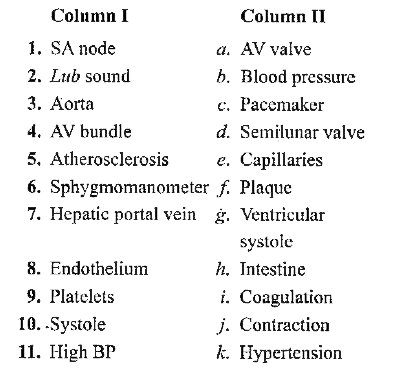Inorganic benzene reacts with HCl to form a compounds B3N3H9Cl3. The protonation occurs at:
B-atom
First at N-atom, then rearranges into B-atom
N-atom
First at B-atom, then rearranges into N-atom
The correct Answer is:C
Step by step video solution for Inorganic benzene reacts with HCl to form a compounds B_(3)N_(3)H_(9)Cl_(3). The protonation occurs at: by Chemistry experts to help you in doubts & scoring excellent marks in Class 12 exams.
Updated on:21/07/2023Topper's Solved these Questions
- INORGANIC CHEMISTRYBOOK - ALLENCHAPTER - INORGANIC CHEMISTRYEXERCISE - s-BLOCK ELEMENTS
21 Videos
- INORGANIC CHEMISTRYBOOK - ALLENCHAPTER - INORGANIC CHEMISTRYEXERCISE - METALLURGY
22 Videos
- INORGANIC CHEMISTRYBOOK - ALLENCHAPTER - INORGANIC CHEMISTRYEXERCISE - COORDINATION COMPOUNDS & d-BLOCK COMPOUNDS (MATCH THE COLUMN)
2 Videos
- HYDROGENBOOK - ALLENCHAPTER - HYDROGENEXERCISE - EXERCISE-5
17 Videos
- Ionic EquilibriumBOOK - ALLENCHAPTER - Ionic EquilibriumEXERCISE - All Questions
37 Videos
Similar Questions
Which of the following order of L.E. is not correct :-
View SolutionIn order to refine "copper" it is melted in a furnace and it is stirred with green logs of wood. The purpose is :-
View SolutionMatch the following columns

View SolutionAssertion : Cu react with HCl & form H_(2) gas
Reason : Cu lies above the hydrogen in electro chemical series
View SolutionThe percentage degree of hydrolysis of a salt of weak acid (HA) and weak base (BOH) in its 0.1 M solution is found to be 10%. If the molarity of the solution is 0.05 M, the percentage hydrolysis of the salt should be :
View SolutionHow many isomers are possible for the following compounds of borazole (a) B_(3) N_(3) H_(5) X (b) B_(3) N_(3) H_(4) X_(2) and ( c) B_(3) N_(3) H_(3) X_(3) ?
View SolutionDiborane (B2H6) on heating with NH3 at 450K produce a compound called Borazole (or) Borazine. It is called inorganic benzene (or) triborane triamine. It is colourless liquid. It has cyclic structure.
B2H6+HClAnhydrousAlCl3−−−−−−−−−→X+H2↑⏐⏐ 'X' is
View SolutionCompound A (C_(3)H_(9)N) reacts with benzene sulphonyl chloride to form a solid insoluble in alkali. The structure of compound A is
View SolutionBorazole (B_(3)N_(3)H_(6)) is related to benzene as
View SolutionColumn IColumn II(A)Inorganic benzene(p)An allotrope of carbon(B)Fulerene(q)Orthosilicate(C)Phenacite(r)An ore of boron(D)Colemanite(s)Borazine(B3N3H6)
View SolutionThe reaction of H_(3)N_(3)B_(3)Cl_(3)(A) with LiBH_(4) in tetrahydrofuran gives inorganic benzene (B). Further, the reaction of (A) with (C) leads of H_(3)N_(3)B_(3)(Me)_(3) . Compounds (B) and (C) respectively , are :
View SolutionInorganic benzene reacts with HCl to form a compounds B_(3)N_(3)H_(9)Cl_(3) . The protonation occurs at:
View SolutionBenzene reacts with Cl2 in the presence of FeCl3 and in absence of sunlight to form
View SolutionInorganic benzene reacts with HCl to form a compounds B3N3H9Cl3. The protonation occurs at:
View SolutionThe reaction of H3N3B3Cl3(A) with LiBH4 in tetrahydrofuran gives inorganic benzene (B). Further, the reaction of (A) with (C) leads of H3N3B3(Me)3. Compounds (B) and (C) respectively , are :
View SolutionInorganic benzene reacts with HCl to form a compound B_(3)N_(3)H_(9)Cl_(3) . The protonation occurs at :-
View Solution

